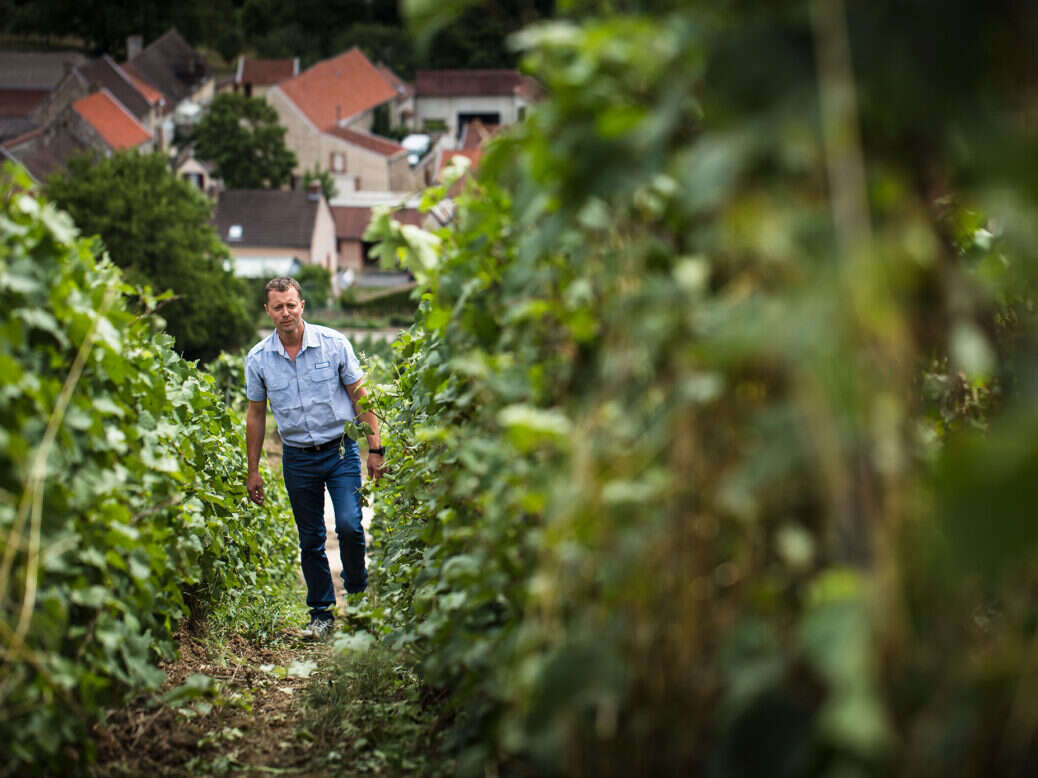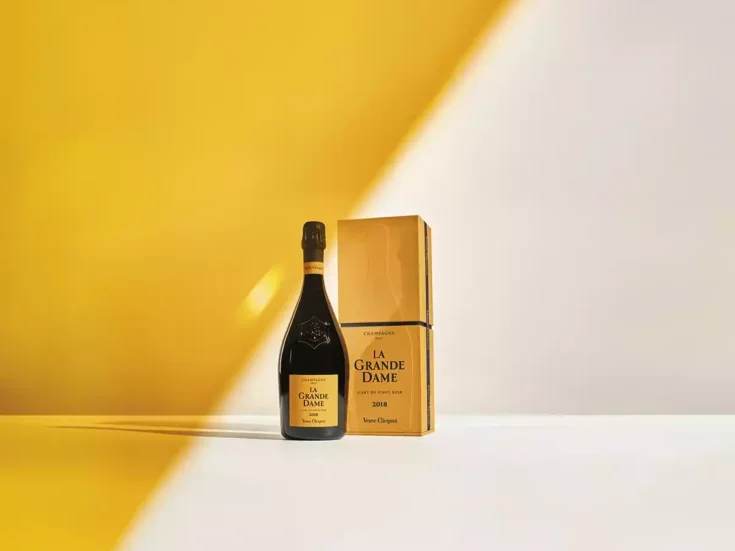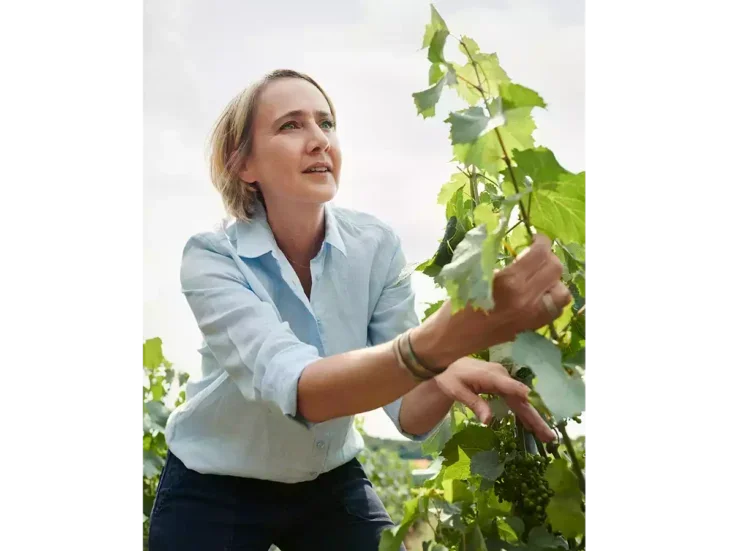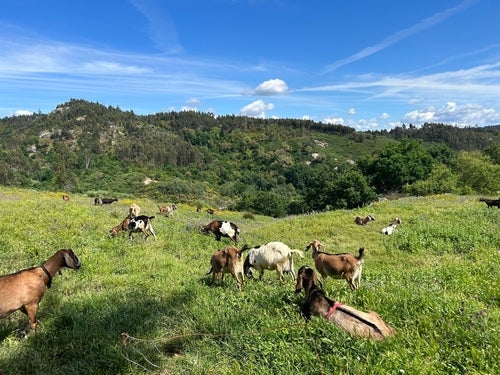
Terry Theise tastes—and drinks—the wines of Cedric Moussé, a Champagne producer at the forefront of the revolution in Meunier in the Marne Valley.
You’ll have noticed, if your life is so drab and wretched that you’ve had time to read my previous reports, that I talk about the distinction between “tasting” and “drinking” wine, how those conditions differ, and how they bear upon wine both singly and as a (sort of) dialectic.
Usually the way a wine tastes is indeed different from the way it drinks when we’re not paying obsessive attention to it. Some wines are better when tasted, some are roughly the same, and some are best when they’re consumed. I haven’t formed a hypothesis whereby I could discern or predict a pattern. That is, I can’t identify a type of wine that’s likely to be better one way or the other. Even if I start to think that high-acid wines are better with food, or just better when consumed casually, some wines will come along to challenge that theory.
What can be said is, if there is any issue with a wine’s finish, that perception will diminish when one isn’t attending to it, i.e., when eating or simply when talking to someone in the kitchen while food’s being prepped.
Tasting, drinking, evaluating
My method of evaluating wines by taking both tasting and drinking into account is an attempt to flesh out the picture, to show a deeper truth, even if that truth entails contradictions (as many truths do), and to add to my experience of the wine/food relationship. Nor is it a contest to see in which matrix the wine is “better.” The two approaches create a palimpsest, in which the revelation is that the superimposed truths create a whole truth greater than the sum of its parts.
I bring this up now, because Cédric Moussé’s Champagnes almost always “showed” best when tasted, and I’ve wondered why. It occurred to me that drinking them in the evening meant having them on a palate that had spent the day tasting them, and maybe my palate was just shot. In that context I also noted that the best evening wines were the least dry—but I prefer to shy away from making this report “about” dosage, except to say it conferred a gras that was welcome after a tasting day.
But you never know what a wine might reveal. I admired the articulation and seriousness of the Champagnes while tasting, but some of that seriousness felt sour later at the table. You will find me effulgent with veneration for most of the Champagnes, yet at the same time I wondered exactly how I’d use them.
Catching a rising star
I feel like I’ve known Cédric Moussé since he was a kid, though of course I haven’t. When we first started doing business it was clear he had huge potential, and would need time to find his way. Some of the first wines he sent over ran counter to the Zeitgeist—not severely dry enough for the hipsters of that era—but it was always, always clear to me that this was Meunier of another type entirely. Having lost out on what turned out to be outstanding agencies by meeting them too soon, when the wines weren’t as stellar as they’d later become, I was determined to avoid that mistake with Moussé.
And so it’s deeply gratifying to observe that Cédric is no longer a “young grower” who’ll go on to do great things. He’s lifted off the runway; he is in flight. Of course he will continue to improve, as his is a restless nature, but I find he takes his place in an elite society of growers doing singular and remarkable work. He’s at the forefront of the revolution in Meunier in which an entire new generation is taking the variety seriously and exploring the limits of its possibility. There are any number of Heroes-Of-Meunier in the Marne Valley (and elsewhere), but where Moussé establishes his special eminence has partly to do with terroir (soil and landscape), partly to do with having had a father who loved and respected the variety, and partly with the imponderable, with the irreducible vision common to visionaries.
There’s no reason, it turns out, why Meunier has to be broad and earthy, no reason it can’t show minerality, no reason it can’t attain great elegance, and no reason it can’t enact a firm brightness we expect from Chardonnay but not from Meunier. And so I bow to my friend, for what he is achieving, even while I would challenge some of his particular choices. That said, the greater context is the entire achievement, irrespective of such cavils as I may have with this wine or that.
Note: These are tasted in ascending order of “sweetness” though all of them are very dry. Thus some of the “top” wines may appear early on.
Moussé Fils Les Vignes de Mon Village, Brut NV (Blanc de Meunier)
A tribute to Cédric’s father, who left us much too soon, and who was a staunch believer in both Meunier and Cuisles itself. Disgorged 7/12/21, from a perpetual blend of 2014-2019.
The wine is entirely Cuisles and entirely Meunier. If you’ve forgotten (shame on you!), Champagne brokers (and other insiders) consider this village to be the Grand Cru for Meunier. So….
The fragrance is papery, crusty and ever so slightly aldehydic, but the palate works improbably well, for a zero-dosage wine. Only on the finish is there an asperity (which could be a disgorgement issue rather than an RS one, and in any case even zero-dosage Champagnes have a smidge of sweetness as a residue of tirage), but the actual palate is interestingly fluffy.
There’s a toastiness common to many of the new-wave Marne Valley Meuniers, and it’s likable, but it’s also not distinctly Cuisles, at least that I can taste. Not to flog the dosage issue, but I feel that a higher dosage would have made this wine more individual, assuming that was Cédric’s desire.
The first finish is the best part; suave and savory and brown-buttery. I have usually respected this wine more than I liked it, but I’ve also never had the chance to follow a bottle over many days. So let’s see if this fellow finds a vein of kindness in his otherwise stern nature. There is cause for hope.
Okay, now it’s five days later, and we drank twice from the bottle with food, and what can we learn? We have more spice now; cardamom, baies rose, harissa, and an iris aroma I wouldn’t have been shocked to sniff in an Urgestein GV. The wine is simply more generous, enough so that its paucity of dosage becomes less relevant. And yet this is all theoretical, because who will consume a bottle this way? It suggests an incipience in the wine that most drinkers will never glimpse, and I don’t think we should have to.
So we have a palimpsest of Champagne, a gnarly first impression covered over by a far more agreeable later impression (we even have a tangible note of chalk at this point), and both impressions are true, and so the wine is in fact at least two wines, and the way you drink it determines which one you get. But, these impressions may well draw closer over time, and so my final judgment is to defer final judgment until/unless I can taste the wine with three years on the cork.
Mommy, I’m confused!
Moussé Fils “Anecdote” 2017 (Les Deux Lieux-Dits) +
Disgorged 2/3/21, the one and only all-CH from this grower, though he doesn’t say “Blanc de Blancs” on his label, preferring to focus on the terroir.
This is fascinating Champagne, and one I hope Peter Liem finds a way to include in any cross-regional flight of Chardonnays—because I know of no others like this. Minerality is constantly implied but only grows explicit on the first finish. “Fruit” is so discreet it may as well not exist, yet the impact of savor makes it a fully rich mouthful. Saline, kelpy, sesame, sea-lettuce, rusks, dill-seed, legume…all adding up to nothing like the sum of those attributes.
Rather, the wine’s gestalt is more herbal and even minty if you just let it wash over you. The finish is a circus of nuance, and the wine is beautifully incoherent; its shape is the firing of details in every direction at once. It is compelling, even stirring, without ever really being beautiful. How it manages to assemble its facets into a finish of such length, depth and grip, I couldn’t explain.
I can remember earlier vintages of this wine that were more accommodating, more “pleasing.” Neither better nor worse, just different. Cédric is following his vision, as is proper, and if he told me he prefers a fascinating wine to one that is merely charming, I’d appreciate that POV. This is indeed a better wine than it used to be. It has authority and complexity, but it is also earnest and cerebral, and my reverence for those qualities reflects the qualities themselves—cool, cerebral, a little aloof.
Like many of these wines, this one alludes to “fruit” more or less constantly, without ever committing itself to being fruity. Nor need it be. We have plenty of fruit-forward Champagnes, but very few with this articulacy and individuality. Ginger and mint stand in place of apples or jasmine. As does a nuance of guava—but remember, this is five days after opening.
Moussé Fils, Terres D’Illite 2017 Blanc de Noirs ++
Disgorged 2/25/21, 95Pm, 5PN, a blend of 23 plots.
The vein of Illite (read about it here: https://www.mindat.org/min-2011.html) is unique to this part of Champagne, to a capillary that runs between Cuisles and Jonquery, and Moussé is the only producer I know of who cherishes it enough to feature it in a cuvée.
It is outstanding Champagne by any reckoning, often my own favorite in the range, and as best I can determine, one of a kind. Is its remarkable flavor due to the illite soil? Maybe! But an obvious inference is not available, and so we observe the correlation and wonder what it might signify.
The results, in the glass, have always shown a determined focus rare for Meunier, and allied to a resplendent deliciousness having nothing to do with dosage (for once) and everything to do with a fruit enflamed with something, whatever it might be. We go to the Special Club to see the regal majesty of Meunier, but we come here to see its expressive possibilities, as this wine is simply more many-faceted and articulate than anything I’ve tasted from the variety.
There’s a kind of venn-diagram with Meunier (as expressed here) and really good Pinot Gris, which is to say the Champagne doesn’t “read” red, as one might expect. It’s doughy, as Meunier tends to be, but it’s like spelt or even teff. But whatever it is, it’s a superb vintage of a wine that’s becoming an Icon of Champagne, a sort of ne plus ultra of Meunier.
But let us test that theory….
Five days later, and from a bottle we only broached once in the interim, there’s an oxidative note I ascribe to the vintage, along with a “sweet-earthy” note that makes me think of Chartogne’s Les Barres. The palate remains wonderfully buoyant, and this is Meunier at its most articulate and least ingratiating. Given the burgeoning number of serious Meunier wines coming out of the Marne valley, this would take a rarefied place among them in a comparative tasting. While the (upcoming) Special Club would hit the operatic notes, this one would be offstage tweaking the fine points of the libretto. And as (justly) celebrated as that Club is, I think this is Cédric’s most significant wine.

Moussé Fils Special Club 2016 Les Fortes Terres Meunier ++
Disgorged on 3/15/21, four parcels in one Lieu-Dit in Cuisles, and as you know, the first-ever 100% Meunier Special Club.
Trying to limn the distinction between these two Meuniers is either a fool’s errand or a path to some sort of enlightenment.
The Club has what it should have: An immediate sense of Significance. A feeling of something regal, and a hint of divinity. Or so one hopes. We certainly find it here (along with a slight volatility? I’ll try a fresh stem.) and I am certain most tasters will see this as clearly the “better” wine. They’re not wrong. The affects of greatness here are justified by many actual elements of greatness. The wine is superb. Even the mousse is more silken (the kings and queens wear finer garments than even the landed gentry, you see).
In a way we have the alpha-to-omega for Meunier with the two wines, this one being the noblest, and the last one the most fundamental. Tasting the two will tell you most of what you need to know about this variety. (As an aside, this wine tastes less dry but is actually a little more dry; its colossal fruit stands in for RS.)
The length here is almost ridiculous. It’s the utter glory of Meunier, just as the last wine was the utter Truth of Meunier.
There is a kind of serenity a grower can attain when he is in full competence, whereby he is able to bring his vision to life. If Cédric isn’t there, he’s pounding away at the door. One sip of this magnificent wine will convince you.
It is again five days later, but this bottle was untouched in the interim. And really, the wine is ludicrously beautiful, a parfait of cinnamon and maize, a smart hedonism reaching to a vivid apex. I remember back to the 2006, when it was a novelty to show a “Meunier Club” (and also the wine was good!) But this pilot is flying the big planes now.
Moussé Fils L’Or D’Eugène Brut NV +
This is the basic NV, disgorged 7/12/21, based on vintage 19 with its perpetual reserve going back to 2003, 80/20 PM/PN, and while the label says “Brut” it would qualify for Extra-Brut. Cédric is also candid about the RS left after tirage—the first time I have seen this on an actual label.
Always instructive to taste the smallest wine after the biggest one, right? This one, it would seem, is entirely adorable, as it happens.
Let’s say, hypothetically, that this is Cédric’s most “mainsteam” wine. In that context, what does it tell us?
It says that Meunier doesn’t need to be slack. It can show all its seductive tastiness and still be firm. It can also be more fresh and lively than it is doughy and toasty. It can be insanely delicious without needing to ingratiate—and this is an abiding riddle with Meunier. Too sweet and it’s marmalade-y, but correcting by excessive dryness makes for this dry phyllo-dough thing, which has a nice crunch but you wouldn’t make a meal out of it. The solution, as we see here, is you place the flavors an octave higher, and then you don’t need a lot of sweetness yet everything sings.
Crazy Terry Metaphor Alert: I live nine miles from the Atlantic, and when we have certain storms we get a lot of seagulls blown over here, and it’s goose-bump beautiful to see them in flight, whether against a cloudy sky or a sunny one. Okay, normal, ordinary birds, but when I see them here, inland, they look like little Gods against the skies. And this wine, this “ordinary” NV Brut, flies with a sudden, improbable grace, quite ordinary yet aloft somehow.
Metaphors aside, what’s it like? It’s like the most focused, disciplined, and has-its-shit-together Blanc de Noirs you ever could taste. I know how often I say this, but when you judge a vintner by his “smallest” wine, you know that vintner in his very soul.
I’ve struggled to keep my hands off the open bottle. This is dangerously tasty stuff. And I suspect it has very few cognates in Meunier-world—at least based on what I’ve tasted.
Moussé Fils Rosé Effusion, Perpetuelle de Blanc et de Rouge
Disgorged 21/6/21, 92/8 PM-PN, and a blend of two perpetual reserves, 2003-2019, one being red and the other white, i.e. Blanc de Noirs.
Confused? The Champagne has the color of cranberry. I infer a 2019-base, and it is very dry at least on paper. But this has always been a bold rosé.
And this is bold, almost savage, certainly impolite—and whether you think “yes but in a good way” depends on your tolerance for funk. Mind you, no more than the average St Laurent (and if you told me SL was in this blend I’d totally believe you), and part of me admires Cédric’s refusal to compromise. This is a strong, vinous, rural wine, bloody and lashing and visceral—on first glance. The days may bring another perspective, and the wine has the stubborn length they all have shown.
We’re well within “Extra Brut” territory, and I would have argued for a higher dosage but still within that limit. “My” wine would have been more complete, richer, more melodic, yet it wouldn’t have been this snorting stubborn beastie Cédric wanted to make. Ultimately his view prevails, not for the aesthetics of the matter but because it’s more important the vision be unperturbed than that the wine pleases this person or that one.
Not to mention, I may yet come around. The last (fourth) sip takes me in another direction, and after a few days I may well eat my words—and drink his wine.
But, well, I’ve had a troubled relationship with this bottle over the days. This is my second “tasting” and in short, I liked it better in past iterations, and the reason is that the current wine is too dry to manage its powerful earthiness. It’s also an instance where a little more RS would have provided enough fruit for the animality to have been a pleasing nuance.

Moussé Fils Special Club Rosé 2017 Infusion de Meunier, Les Bouts de la Ville +
Disgorged 5/10/2021, 3-day skin-contact saignée, 100% Meunier.
Well that is an aroma.
Cédric seems to understand what “luxury” Champagne entails, as his two Clubs seem to be citizens of a different country. Clearly he likes a forthright Rosé. There’s nothing ethereal here. But there’s something of a perfect duck breast, from a great purveyor, cooked perfectly medium-rare, seasoned properly, and served with faro cooked in the liquid from reconstituted dried porcinis.
It’s savory, in other words. But it’s also not earthbound. There’s a floating elegance here, for all its solidity. We are in the cranberry/rhubarb/redcurrant vein of Rosé, and we are decidedly toothsome—yet not chewy—yet there’s a cardamom-like sweetness around the periphery. Someone dropped a whole clove into the stew pot by accident, and offered to fish it back out. “Nah, leave it there, it might taste good.”
To be continued.
Days hence, I’m finding this wine is best with a lot of white-space around it. In the bustle of a kitchen where dinner’s cooking, or even at the table in the whoosh of chatter, it loses the high notes and becomes a rather austere rosé. When “studied,” and allowing for its wee scrape of astringency, one can appreciate and admire it. As I do—but I’m not thinking “I must have this in my cellar,” as I have with several of its siblings.
I can perhaps imagine the thinking behind it. Cédric’s wines today have a certain adamant willfulness. This suits the whites, more or less (!) but if he’s thinking “The rosés have so much fruit I can allow them to be solemn and dry” then I would argue the opposite—not that they should be “sweet,” but just because you don’t want them singing like Michael Bublé doesn’t mean they have to sing like Tom Waits. (And speaking of which, where’s Paul Buchanan’s new album? It’s ten years since Mid-Air…)






